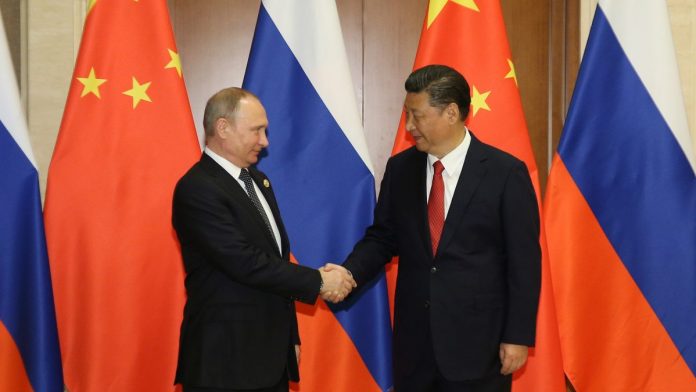
CENTRAL Asia has become a central point of interest due to the current geo political situation of the world. China and Russia have seen occupying the main actors, and only available options.
The key elements to it are the establishment of ‘The Collective Security Treaty Organization’ (CSTO) as well as economic integration with Russia within the ‘Eurasian Economic Union’ (EEU), including 6 countries i.e. Armenia, Belarus, Kazakhstan, Tajikistan, Russia and Kyrgyzstan established in 2015.
CSTO was established with the objectives of strengthening peace, regional and international stability, and security.
It was aimed to collectively protect the independence, sovereignty and territorial integrity of the member states.
Eurasia’s framework construction is generally dependent on the Chinese ‘Belt and Road Initiative’ with the agreement of cooperation with the Eurasian Economic Union.
Through this, Russia, China and Central Asian countries would be connected in the economic sphere per agreement among Russia and China in May 2015.
According to the report of the International Monetary Funds (IMF) Asia and Pacific Department that China’s economy is 30% as productive as the world’s best-performing economies like Japan, Germany, the USA, etc.
The external demands for commodities, autos, luxury goods and other sectors have increased tremendously by the Chinese economic growth.
China has achieved the milestone in 2020 of receiving the largest foreign direct investment and displacing the US from foreign capital from its customary role. According to Moody’s Analytics forecast that China’s economy is expected to account for 16.8% of global GDP which is the most of the country in the world.
The ten states’ member Association of Southeast Asian Nations (ASEAN) bloc in 2020 also placed China as No.1 trading partner, EU with no.2 and placing the US at No.3 includes Thailand, Bangkok, Indonesia, Philippines, Malaysia, Singapore, Brunei Darussalam, Vietnam, Cambodia, and Myanmar.
According to the research of Karaganov (2019) and Lukin (2018, 2019) that due to the joint ventures among Russia and China of the interconnected network of free trade zones, economic partnerships, inter-bloc trade and regional integration processes have created an atmosphere of new cold-war between Russia-America and China-America’s relations.
This strategic rivalry between China-US and Russia-US signals future multi-layered conflict which rises to economic and military tensions in the world. It is seen that the US continues in the deployment of forces in every region, especially in Europe, the Middle East and Asia.
In 2019, Russia and China along with other six nations participated in a five-day military exercise which included 100,000 troops.
In another Vostok military exercise, the two countries joined with over 300,000 troops in Siberia near the Chinese border. These exercises have shown the closeness among the two nations since the Sino-Soviet split in 1961. At that time, both nations were competing to control the Communist world and considered alliance among themselves against their common opposition of the US.
In 2002, Russia and China signed a treaty of ‘friendship and cooperation and created the Shanghai Cooperation Organization.
Today, China and Russia are seen growing their bilateral economic relationship as a counterbalance, stated Hoffman (2019) in his report.
China is the main purchaser of Russian military equipment and also relies on the vast oil and natural gas reserves of Russia.
According to the US National Defence Strategy report 2018 that Russia and China are ‘revisionist powers’, and seeking in shaping the world consistent with their authoritarian model which threatens US national security.
Regarding Pakistan, China-Pakistan Economic Corridor (CPEC) is an economic corridor establishment to promote bilateral connectivity, investment, construction, trade and economy among countries of Asia, Africa, and Europe through land transportation via ‘Belt and Road Initiative’. Official data indicates that Pakistan and China’s bilateral trade grew to $15.6% billion in 2019, which was $2.2 billion in 2005.
In the war-torn country Afghanistan, it is seen that China and Russia have taken initial steps for stabilizing the country economically with their interests of potential trade engagements. As Afghan soil is up to $3 trillion minerals including 2.2 million tonnes of iron ore, 60 million tonnes of copper, and 1.4 million tonnes of rare minerals.
As active actors, both Russia and China are being considered among those countries which are looking for sincere peace and development in Afghanistan, but some Western countries continue to seek to undermine their role, according to Global Times (2021).
Besides, India has shown interest in Afghanistan also with infrastructure development such as roads, dams, electricity transmission lines, substations, hospitals and schools with the US back to be a potential trade partner along with Pakistan, Iran, China and Russia.
In the past, it was seen that Russia played a key role in the protection of Central Asian States in the 1990s and early 2000s for achieving the peaceful resolution to the civil war of Tajikistan.
Tajikistan is considered a most dependent country on Russia as in the past arms, subsidized fuel and credits were provided to Dushanbe, and acceptance of migrants comprising half of Tajikistan’s GDP.
Thus, Asian states have Russian and China’s enormous role in their economic and political life as stated by Kazantsev, Medvedeva, and Safranchuk (2021) in their research.
—The writer is a columnist, researcher and adjunct faculty member at Riphah International University, Islamabad.
Source: Published in Pak Obsever

